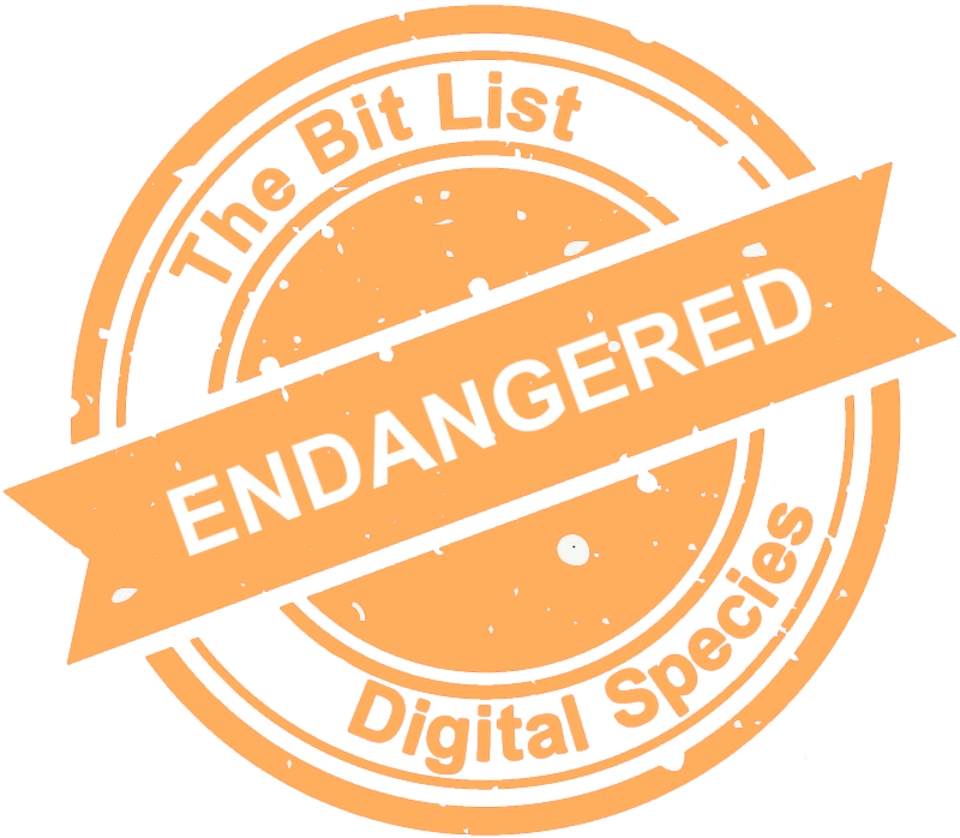Collections Information Management Data and Systems
|
|
 |
|
|
Descriptive information and data, covering both the systems (databases) and the data they contain. This includes information made publicly available, and information only available for internal use. |
||
|
Digital Species: Museum and Gallery |
Trend in 2024:
|
Consensus Decision |
|
Added to List: 2023 |
New Rescoped Entry |
|
|
Imminence of Action Action is recommended within three years, detailed assessment within one year. |
Significance of Loss The loss of tools or services within this group would have a global impact. |
Effort to Preserve | Inevitability It would require a major effort to prevent or reduce losses in this group, possibly requiring the development of new preservation tools or techniques. |
|
Examples Covered under this entry are third-party and in-house collections information management systems and databases, current and legacy, both large and small (e.g., Microsoft Access, FileMaker Pro). |
||
|
‘Critically Endangered’ in the Presence of Aggravating Conditions Poor or no documentation; lack of technical and preservation infrastructure; complex interdependencies on specific hardware, software or operating systems; significant volumes or diversity of data; conflation of access with preservation; dependence on proprietary products; lack of preservation capacity in museum or gallery; poorly developed or no processes for migration or normalization; uncertainty over IPR or the presence of orphaned works. |
||
|
‘Vulnerable’ in the Presence of Good Practice Strong documentation; preservation capability; strong repository and preservation technical infrastructure; good descriptive cataloguing; use of open formats and open source software; considered data management planning; licencing that enables preservation. |
||
|
2023 Review This entry was added in 2019 under ‘Digital Materials in Museums and Galleries’ and previously rescoped in 2021 to ‘Supporting Digital Materials for Museums and Galleries’. The 2023 Bit List Council superseded the entry, splitting it into six discrete entries as the scope of the single entry was too broad to provide the guidance needed. The recommendation to break this entry down was also made by the 2021 Jury, as the types of digital collections content in museums can be vast and offer particular risks in museum and gallery contexts. For this entry on collections information management data and systems, context is important. For example, smaller 'in-house developed' and 'cottage industry' systems may be at higher risk than larger third-party systems with significant international buy-in and support. They additionally recommended that the next major 2025 review consider whether or not to split out the data held in Collections Information Management Systems from the systems themselves. |
||
|
2024 Interim Review These risks remain on the same basis as before, with no significant trend towards even greater or reduced risk (‘No change’ to trend). While there are no changes to the risk trend, the context in the wider cultural sector of the 2023 British Library Cybersecurity incident should be taken into account that this type of data may be impacted if museum and galleries are on the receiving end of cybersecurity incidents. Museums and galleries may have older legacy systems in place (and potentially with fewer backups and redundancies built in), and so the impact may be significant for them. |
||
|
Additional Comments Databases and catalogues can have a knock-on effect. The information they contain is valuable for contextualizing and understanding the resources they describe. Without them, meaning may be lost even if bits are not. Case Studies or Examples:
|
||









































































































































